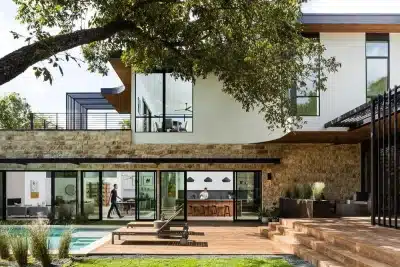
Interior design is a career perfect for creatives and those with artistic talents. The industry is growing rapidly, with statistics suggesting that the market is expected to expand from $137,865.19 million in 2023 to about $222,266.43 million by 2032, with a CAGR of 5.45% from 2024 to 2032. This growth projection indicates that interior design can be a rewarding career. Here are five tips for becoming a successful interior designer.
1. Study Interior Design
Pursuing an interior design degree is crucial for success in this field. It provides in-depth knowledge in:
- Space Planning: Understanding how to utilize space efficiently and effectively.
- Design Principles: Learning the fundamentals of design, including balance, contrast, and harmony.
- Architecture: Gaining insights into architectural elements and how they influence interior spaces.
- Business: Developing skills in project management, budgeting, and client relations.
An interior design degree introduces you to:
- Textiles and Fabrics: Understanding different materials and their applications.
- Color Palettes: Learning how to create cohesive and appealing color schemes.
- Furnishings: Selecting and arranging furniture to enhance functionality and aesthetics.
- Lighting: Designing lighting plans that enhance the ambiance and functionality of a space.
Choose a program that meets international standards for interior design education. Institutions like American International University or other reputable schools offer quality programs. Additionally, some programs offer internships and hands-on projects, which are invaluable for gaining practical experience. Alternatively, certification programs are shorter and more focused, ideal for those who want to specialize or have a related degree.
2. Build Your Skills
Every successful interior designer needs a diverse range of skills, including:
- Technical Skills: Understanding building codes, design principles, and space planning is essential. Proficiency in CAD (computer-aided design) software for accurate drawings is also crucial. Additionally, strong project management skills are needed to manage resources, budgets, and timelines effectively.
- Soft Skills: Develop strong interpersonal and communication skills to effectively communicate your ideas with clients and contractors. Attention to detail is vital to ensure high-quality outcomes. Creativity and problem-solving skills are also important for overcoming design challenges and creating unique solutions.
Building these skills can be achieved through formal education, workshops, and self-directed learning. Participating in design competitions and collaborating on projects with peers can also help refine your skills and expand your portfolio.
3. Gain Relevant Professional Experience
Professional experience is vital for honing your skills and identifying your unique design style. You can gain practical experience through:
- Networking: Attend conferences, trade shows, and industry events to meet experts and learn about design trends and new products. Joining professional organizations like the American Society of Interior Designers (ASID) can provide valuable networking opportunities and resources.
- Entry-Level Positions and Internships: These provide practical experience, allowing you to work with experienced professionals, build your skills in real-world settings, and gain deeper insights into the field. Look for internships at reputable design firms, and don’t hesitate to volunteer for projects to gain experience.
Additionally, consider seeking mentorship from established interior designers. A mentor can provide guidance, feedback, and valuable industry insights, helping you navigate the early stages of your career.
4. Consider Specializing
The interior design field is broad, offering multiple specializations such as:
- Residential Interior Design: Focusing on designing homes, apartments, and living spaces.
- Commercial Interior Design: Designing offices, retail spaces, and other commercial environments.
- Sustainable Design: Emphasizing eco-friendly materials and energy-efficient designs.
- Lighting Design: Specializing in the planning and implementation of lighting solutions.
- Healthcare Interior Design: Creating functional and healing environments in hospitals, clinics, and care facilities.
- Hospitality Interior Design: Designing hotels, restaurants, and other hospitality venues.
Specialization can set you apart and establish you as a thought leader in your niche. Clients are more likely to trust a specialist over a generalist. Specializing allows you to deepen your expertise and offer more tailored services, which can lead to higher client satisfaction and potentially higher earnings.
5. Look for Work Opportunities or Start a Business
To kickstart and grow your interior design career, consider:
- Freelancing: Offers flexibility and potentially higher pay, as you are not tied to a single employer. It allows you to take on a variety of projects and build a diverse portfolio.
- Working in a Company: Provides steady pay, collaborative opportunities, and benefits. Working for a reputable design firm can also provide stability and opportunities for advancement.
Alternatively, you can start your own interior design business. This path requires a strong business acumen, including skills in marketing, finance, and client management. Starting your own business offers the freedom to pursue your creative vision and build your brand. Consider developing a business plan, seeking funding if necessary, and leveraging your network to attract clients.
Endnote
Working as an interior designer allows you to showcase your creativity while transforming dull spaces. To become successful in this field, pursue education, develop essential skills, gain practical experience, specialize, and explore various employment opportunities or start your own business. By following these steps, you can build a rewarding career that not only brings you personal satisfaction but also enhances the lives of those who inhabit the spaces you design.








